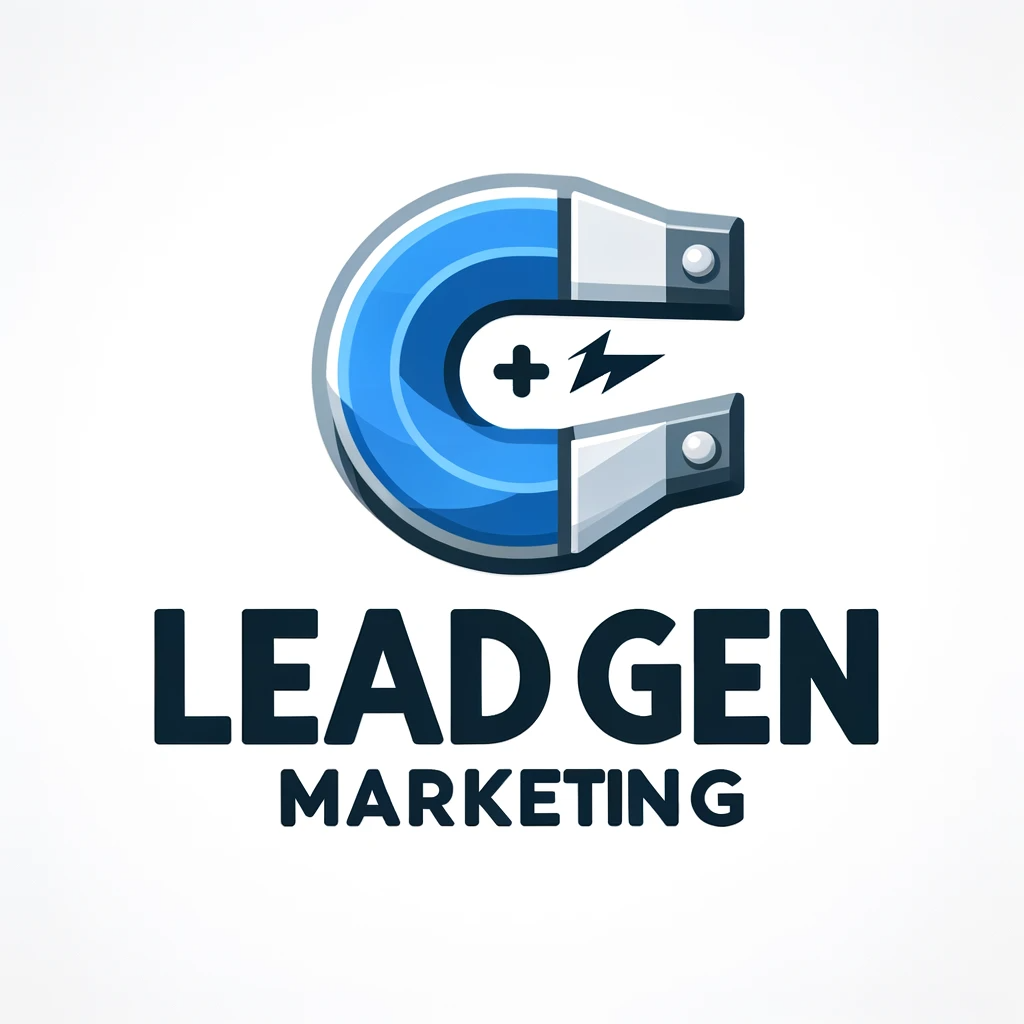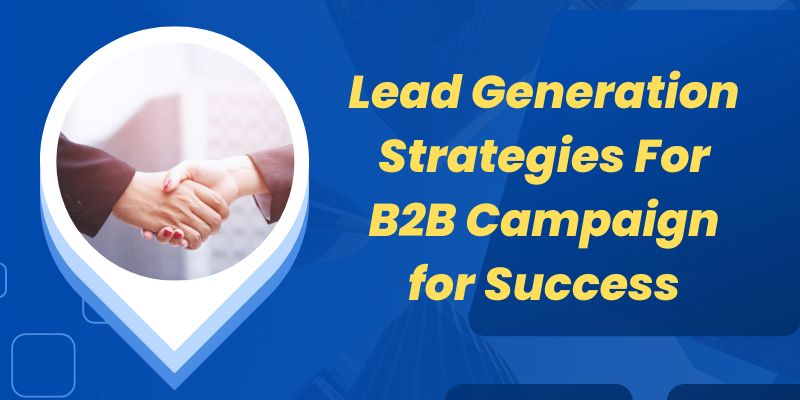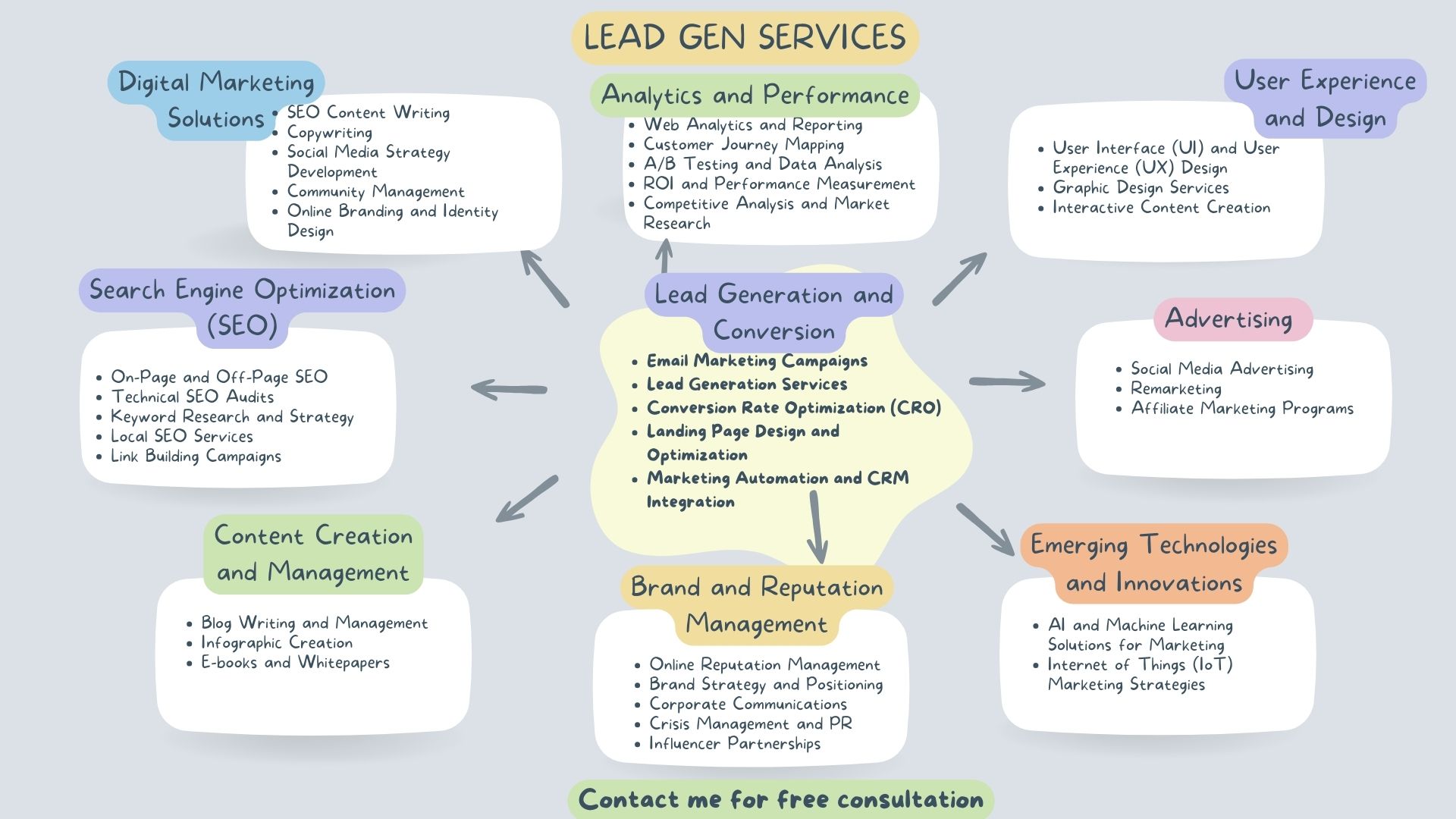Do you want to attract more potential customers to your business and turn them into loyal fans with Lead Generation Strategies for B2B?
Do you want to stand out from the crowd and beat your competitors in the digital world?
Do you like to learn the secrets of successful lead-generation strategies in digital marketing?
If you answered yes to any of these questions, this comprehensive guide is for you
Continue reading to learn:
– What is lead generation, and why it’s so crucial for your business
– How lead generation differs from customer acquisition and why you need both
Let’s get started.
What is Lead Generation, and Why is it Important?

Lead generation attracts and captures potential customers’ interest in your products or services. It’s the first step in building a relationship with your target audience.
But why is lead generation so crucial for your business?
The answer is simple: consumers have more choices than ever before.
In the digital age, consumers can easily access information about products, services, and prices online. They can compare different options and make informed decisions. They can also ignore or block unwanted ads and messages.
Traditional marketing methods are no longer enough to reach and persuade potential customers. You can’t rely on advertising or cold calling to get their attention. You must offer something valuable that catches their eye and solves their problems. You need to start a conversation with them and build trust and rapport. You must guide them through the sales funnel until they’re ready to buy from you.
This is where effective lead-generation strategies for B2B come in handy.
- drive traffic to your website,
- engage your visitors with valuable content,
- and persuade them to share their contact information.
The ultimate goal? To convert these leads into paying customers.
Here are some examples of how lead-generation strategies for B2B can help your business:

– SEO (search engine optimization) helps you rank higher on search engines for relevant keywords. This increases your visibility and organic traffic.
– Social media marketing helps you reach and connect with your target audience on social platforms. Some of them are Facebook, Instagram, Twitter, LinkedIn, etc.
– Content marketing helps you create and distribute engaging, informative, and entertaining content that showcases your expertise and value proposition. You can use blogs, videos, podcasts, ebooks, webinars, etc. to educate your audience and solve their pain points.
– Email marketing helps you communicate with your leads and customers on a personal level. You can send newsletters, offers, tips, reminders, etc. to build trust and loyalty.
– PPC (pay-per-click) advertising helps you reach your ideal customers who are actively searching for your products or services on CPA lead generation platforms, such as Google or Facebook. You can create targeted ads that match their intent and drive them to your landing pages.
– AI for Lead Generation AI technologies are revolutionizing how sales teams identify, engage, and convert potential leads into customers. By harnessing AI’s power, businesses can automate and optimize various aspects of the lead generation process, leading to more efficient and effective prospecting strategies.
These are just some of the many lead-generation strategies in digital marketing that you can use to grow your business. If you need additional help, you can contact us any time, and we will help you elevate your lead generation for the B2B game.
But how do you know which ones work best for you? And how do you measure their effectiveness?
That’s where lead-generation metrics come in.
Lead generation metrics are indicators that help you track and evaluate the performance of your lead generation strategies for B2B. They allow you to identify what works and what doesn’t and how to optimize your campaigns for better results. To optimize lead generation KPIs, you must also consider website bot detection.
Some of the most common lead generation metrics are:

– Traffic: the number of visitors who come to your website or landing pages from various sources.
– Leads: the number of visitors who share their contact information with you in exchange for something valuable, such as a free ebook, a webinar registration, a coupon code, etc.
– Conversion rate: the percentage of visitors who become leads from the total number.
– Cost per lead: the money you spend to acquire one lead.
– Lead quality: the degree of fit and engagement of your leads for your products or services.
– Lead nurturing: providing relevant content and offers to your leads until they are ready to buy from you.
– Sales: the number of leads who become paying customers.
– ROI (return on investment): the ratio of revenue generated by your lead generation strategies for B2B to the cost of implementing them.
By tracking and analyzing these metrics, you can improve your lead generation strategies for B2B in digital marketing and achieve your business goals.
But wait, there’s more.
How Lead Generation Differs from Customer Acquisition and Why You Need Both

You might wonder: “Isn’t lead generation the same as customer acquisition?”
Not quite.
Customer acquisition is the process of gaining new customers for your business. It can involve converting data-driven leads into paying customers or convincing existing customers to buy more products or services from you. Customer acquisition is about closing the deal.
On the other hand, lead generation focuses on attracting potential customers or “leads” who may or may not be ready to buy from you. Lead generation is about starting a conversation.
In other words, customer acquisition is the end result of lead generation.
You need both processes to grow your business.
Why?
Because lead generation and customer acquisition complement each other.
Lead generation helps you build a pipeline of qualified prospects interested in your products or services. Customer acquisition enables you to turn these prospects into loyal customers who generate revenue for your business.
Lead generation helps you increase your brand awareness and reach digitally. Customer acquisition enables you to improve your market share and competitive advantage.
Lead generation helps you establish trust and credibility with your target audience. Customer acquisition enables you to retain and delight customers with exceptional service and value.
Both processes require different strategies and tactics.
For example, lead generation strategies for B2B may include SEO, social media marketing, content marketing, email marketing, PPC advertising, etc.
Customer acquisition strategies may include sales calls, webinars, free trials, discounts, referrals, etc.
The key is to align your lead generation and customer acquisition strategies with your business goals and target audience. You need to understand who your ideal customers are, their needs and challenges, and how you can help them. You must create a seamless and consistent experience for them across all touchpoints. You need to optimize your campaigns for maximum conversions and ROI.
By doing so, you can leverage the power of lead generation and customer acquisition to grow your business in the digital world.
Harnessing the Power of Lead Generation and Prospecting in Your Business Strategy
After establishing a clear understanding of the difference between lead generation for B2B and customer acquisition, it’s crucial to delve deeper into the significance of lead generation and prospecting.
Lead generation and prospecting are the initial steps in building a relationship with potential customers. While lead generation casts a wide net to attract many leads, prospecting involves sifting through these leads to identify those most likely to convert into customers.
Why Lead Generation and Prospecting are Essential:
Identifying Potential Customers: Lead generation and prospecting help you identify individuals or organizations that might be interested in your products or services.
Nurturing Leads: Through these processes, you can nurture relationships with potential customers by providing valuable information, answering questions, and establishing trust.
Qualifying Leads: Prospecting, in particular, plays a critical role in qualifying leads. This step ensures that your sales team focuses its efforts on leads with the highest conversion potential, optimizing resource allocation.
Customized Marketing Efforts: By understanding the specific needs and interests of your prospects, you can tailor your marketing and sales approaches to be more effective.
In conclusion, while customer acquisition is the goal, lead generation for B2B and prospecting are the vital processes that fuel the journey toward this goal. By effectively implementing these strategies, you can create a robust pipeline of potential customers, setting the stage for successful conversions and long-term business growth.
If you need additional help with content creation and promotion of your blog, you can reach me at
ekuzevska@onlinemarketingacademy.club




No responses yet